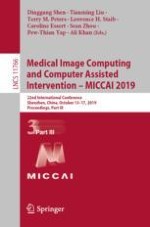2019 | OriginalPaper | Buchkapitel
Interpretable Multimodality Embedding of Cerebral Cortex Using Attention Graph Network for Identifying Bipolar Disorder
verfasst von : Huzheng Yang, Xiaoxiao Li, Yifan Wu, Siyi Li, Su Lu, James S. Duncan, James C. Gee, Shi Gu
Erschienen in: Medical Image Computing and Computer Assisted Intervention – MICCAI 2019
Aktivieren Sie unsere intelligente Suche, um passende Fachinhalte oder Patente zu finden.
Wählen Sie Textabschnitte aus um mit Künstlicher Intelligenz passenden Patente zu finden. powered by
Markieren Sie Textabschnitte, um KI-gestützt weitere passende Inhalte zu finden. powered by
